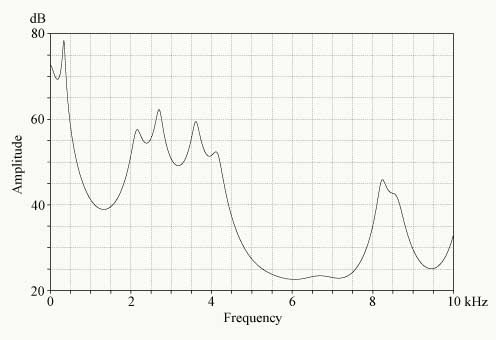
|
LING 520 |
|
LAB 4: Vowel formants
|
1. Recording: The word list for recording is here. It includes three repetitions of the following words: beat, bit, bet, bat, hot, bought, good, boot, about. If you're not a native speaker of English, recruit a friend who is.
2. Read through the following online Praat tutorials:
3. Download all the speech files about the line in the list here. These are the recordings of the word list from last year (the ones below the line are from this year).
In your own speech file, find your favorite beat, boot, and hot from the three repetions. Plot a LPC spectrum for each of the vowels in the words, analyzed at the portion that is least affected by the consonants. Your plots should look like the following (from Sidney Wood's Praat tutorial website):

There are three repetitions (tokens) of the word about in your own recording. Check the spectrogram and the formants of
the schwa in these tokens. Find a portion where the first three formants are most evenly spaced. Calculate the length of
your vocal tract using these format values. Assume that the speed of sound is 350 m/s.
1. Measure the first two formants of the vowels in all three repetitions of the words for all speakers (Note that you only need to measure the schwa for the word about). You need to locate the least affected portion in each vowel.
You can work in pairs if you want.
Put your measurements in a file with one row per vowel, and columns name, word, F1, F2, F3, e.g.
aviad beat 396 2291 2875
2. Average the format values of the three repetitions of each vowel for each speaker. So for each speaker, you have an averaged F1 and an averaged F2 for each of the nine vowels.
3. Convert the formant frequencies in Hz to the Bark scale, using the following formula (from Traunmüller 1990):
b = 26.81/(1+(1960/f)) - 0.53 (f is in Hz, b is in Bark)
4. Plot the formants (in bark) using the plotting technique of your choice (R, Matlab, whatever). If you're unsure how to do this, ask for help.ß
5. Discuss what you find from the plot. For example, what's the difference between male and female? What are the variations among the speakers?
NOTE: you can do everything in Part IV by hand. But you'll probably find it easier to use the methods described here.